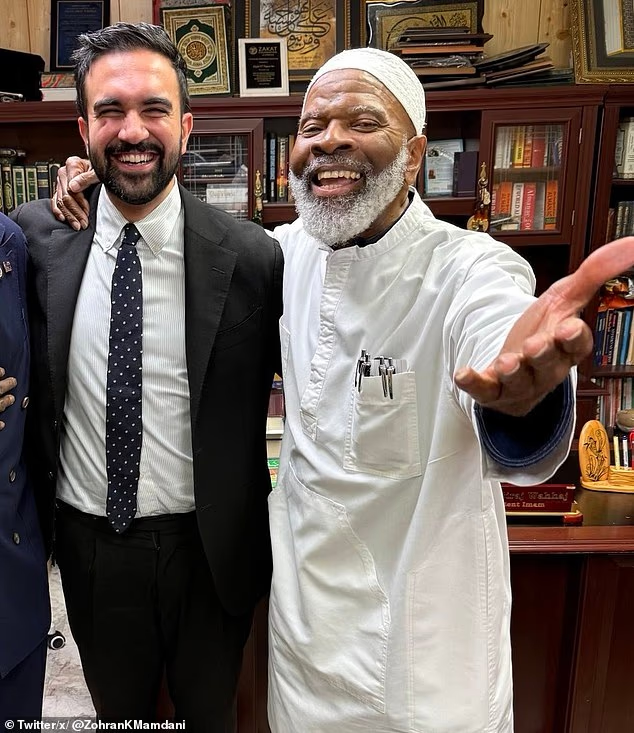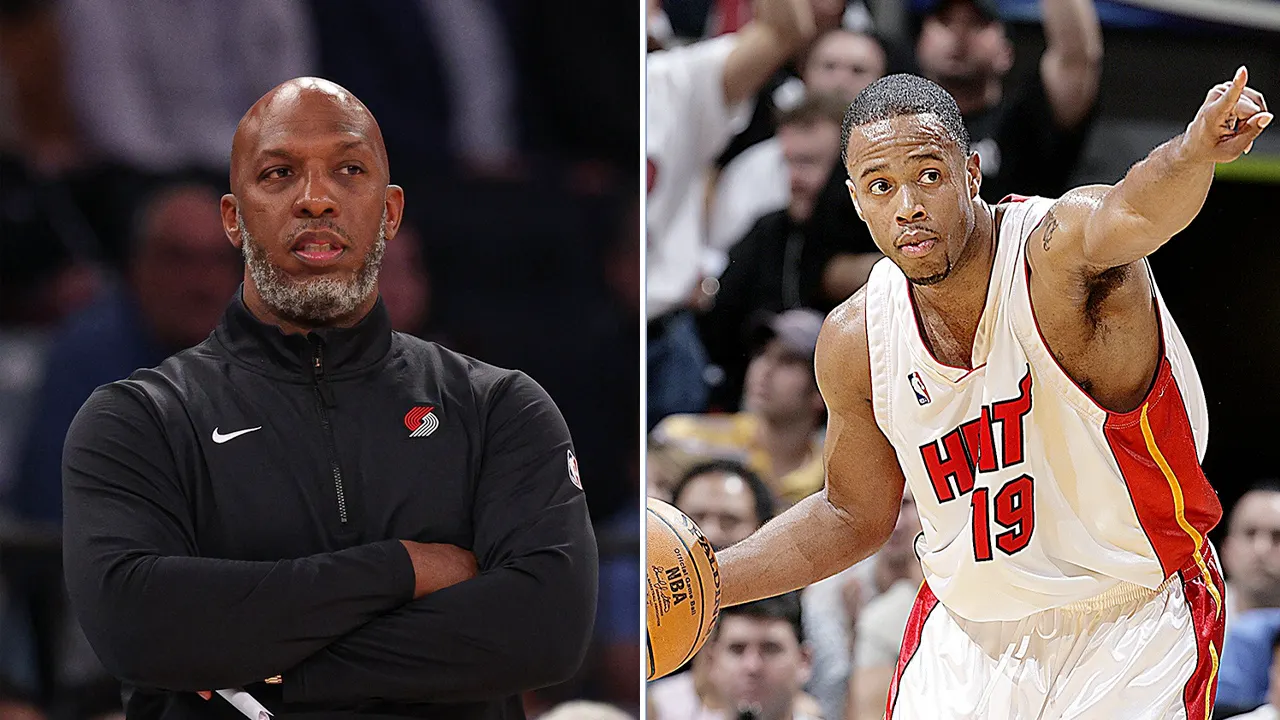Half-lit skyscrapers flicker like dying stars, billboards reading ‘NYC: Out of Funds’ and smoke rises from distant protests. This is New York City‘s future if Zohran Mamdani is elected mayor, according to AI.
The video predicts how the city will fare two years into Mamdani’s administration, where ambitious promises collide with harsh economic realities.
Rent freezes on one million apartments leave landlords bankrupt, buildings unmaintained and residents facing leaks, mold and blackouts.
As Lawrence H Summers, University Professor and President Emeritus at Harvard, quipped: ‘Rent control is the second-best way to destroy a city, after bombing.’
AI envisions that property-tax reforms would push wealthy residents to flee, emptying luxury towers and shrinking the city’s revenue.
Free buses intended to serve 415 million annual riders grind to a halt without fare revenue, causing gridlock, closed shops and spiking pollution.
City-run grocery stores fail to compete with private chains, leaving empty shelves, long lines, and growing food deserts. Community safety programs, staffed by undertrained civilian teams, struggle to respond and crime surges as police morale collapses.
According to the AI simulation, these crises stem from well-intentioned policies pushed beyond the city’s capacity.
AI has reimagined how New York City will fare two years into Zohran Mamdani’s (left) administration, where ambitious promises collide with harsh economic realities. He is pictured with Muslim cleric Siraj Wahha who was listed as an ‘unindicted co-conspirator’ in the 1993 World Trade Center bombing

The AI predicts New York City’s Times Square will become a tent city under Zohran Mamdani’s policies
Mamdani’s plan is funded by hiking corporate taxes to New Jersey’s 11.5 percent rate, imposing a two percent flat tax on millionaires, and generating $1 billion from procurement reforms and fines.
‘We know that our plan will work because New York City has a $1.3 trillion economy, and it can afford to support a stronger public sector. Our tax base is stable and growing, with new millionaires minted every year,’ the Mamdani campaign states.
‘But New York City taxes everyone at the same rate, regardless of whether you make $50,000 a year or $5 million. And our state corporate tax rate is lower than all our neighboring states, New Jersey, Connecticut, Massachusetts, Pennsylvania, Vermont, Rhode Island and even New Hampshire.’
Critics warn that Mamdani’s agenda could speed the exodus of wealthy residents and businesses already relocating to lower-tax states such as Florida.
Millionaires remain the keystone of New York’s finances, while they make up just one percent of taxpayers but generate a staggering 40 percent of city personal income tax revenue and 44 percent of the state’s.
In 2022, they contributed $34 billion to state and city coffers, including $28 billion from residents alone.
The AI foresees millionaires fleeing New York City, seeking places where they will not be forced to give away their money. The video shows wealthy brownstone residents setting up ‘For Sale’ signs out front.
Historical precedents show that rent freezes and aggressive property-tax reforms can trigger housing decay, drive out the wealthy and discourage investment.

Mamdani wants to open city-run grocery stores, promising lower food costs. But AI foresees City-run grocery stores failing to compete with private chains, leaving empty shelves, long lines and growing food deserts

The technology also showed lines forming out side the city-run grocery stores, leaving New Yorkers waiting for houres

The AI-generated video shows luxury towers sit empty, brownstones are plastered with ‘Foreclosure’ signs and outer boroughs receive only minimal funding
The City and State of New York reported that there will be two consequences for Mamdani’s rent freeze.
The first being that 60 percent of renters will not see a freeze, but instead, see a rent increase.
The other 40 percent getting the break will be at risk of terrible living conditions.
In New York, 200,000 stabilized units are already in ‘functionally bankrupt’ buildings, highlighting the risk of widespread decay.
The AI pictures a mother with two children in a run-down apartment and mold growing on the walls.
The technology also predicts that property-tax reforms could accelerate a luxury exodus.
Currently, co-ops and condos are underassessed compared with one-to-three-family homes.
Equalizing assessments could raise bills by 40 percent on high-end units, pushing wealthy residents to New Jersey and shrinking revenue.
The AI-generated video shows luxury towers sit empty, brownstones are plastered with ‘Foreclosure’ signs and outer boroughs receive only minimal funding.

The AI foresees millionaires fleeing New York City, seeking places where they will not be forced to give away their money. The video shows wealthy brownstone residents setting up ‘For Sale’ signs out front
Transit, another cornerstone of Mamdani’s vision, is projected by AI to fail spectacularly.
The MTA’s $19.3 billion operating budget relies on fare revenue for 39 percent of its costs.
Eliminating fares for 415 million riders could collapse bus service, the AI predicts, leaving broken-down buses blocking streets, overcrowded stops and dedicated lanes causing gridlock that chokes businesses.
Several US cities, including Kansas City, Missouri, Akron, Ohio and Alexandria, Virginia, have launched free bus rides, but these cities are only home to hundreds of thousands of people.
That is compared to the eight million that live in New York City, which the AI foresees as overwhelming operations and worsening air pollution.
City-run grocery stores, designed to provide affordable essentials, appear to be striking a chord with New Yorkers.
An April 2025 report from the Climate & Community Institute and Data for Progress found that two-thirds of residents support the creation of municipal grocery stores.

Transit, another cornerstone of Mamdani’s vision, is projected by AI to fail spectacularly
The survey also revealed widespread concern over rising food costs: 85 percent said they were paying more for groceries this year than last, and 91 percent worried about the impact of inflation on household budgets.
While inflation plays a role in higher prices, US food companies have continued raising prices faster than both inflation and wage growth, boosting their profits even as shoppers struggle at the checkout.
Mamdani’s plan to open five city-owned stores per borough, buying/selling at wholesale to undercut prices, redirects subsidies from private chains.
Chicago’s similar push under Mayor Johnson flopped due to voters rejecting it amid $100 million startup costs, with projections of endless deficits.
What may hit home with most New Yorkers would be the disappearance of small bodegas, as they would be forced to close because they could not compete.
The AI suggested it would also be the wrong choice, showing looted ‘NYC Fresh Market’ locations in the Bronx, with empty shelves and long lines, reflecting shortages triggered by price controls and bureaucratic inefficiencies.

Mamdani is also running employing a civilian-led Department of Community Safety to handle non-violent crises and expand violence prevention programs, rather than relying solely on police.
Critics of Mamdani’s community safety programs include Andrew Cuomo, who argues the plans would lead to increased crime and are a reversal of Mamdani’s past statements about shrinking the NYPD.
Other critics point to the potential difficulty in implementing his plans, the high cost of funding them, and a general skepticism about whether a new department can effectively manage public safety in the city.
The AI video may be leaning more toward the critics as it predicts undertrained civilian teams fumble thousands of calls, while NYPD morale collapses, resignations spike and violent crime surges 20 percent in the simulation.
Streets in Harlem overflow with unchecked incidents, reflecting research linking de-policing to spikes in violent crime elsewhere.
The AI also flags economic strain on small businesses, having to adopt a $30 minimum wage, phased by 2030, which could double current low-wage earnings.
However, the reality, according to AI, would be the shuttering of hundreds of eateries, raising unemployment and pushing workers to New Jersey.
The simulation shows boarded-up shops along city avenues, echoing the unintended consequences of wage hikes without support for small businesses.
Education and sanctuary protections also falter amid Mamdani’s free childcare policy, which would be for every New York City child aged six weeks to five years.
While the issue is one that many New Yorkers raise concerns about, no state or city has ever rolled out such a plan. New Mexico will be the first state to offer free childcare to all residents starting in November 2025, regardless of income.
The AI believes Mamdani’s policy could face $10 billion shortfalls, leaving waitlists for 100,000 children.
Schools lose gifted programs, test scores drop and federal court rulings strike down sanctuary expansions, leaving immigrant families vulnerable.
By 2027, the AI warns, New York City could face unemployment, doubled homelessness and a surge in crime. Taxes intended to fund reforms chase firms to New Jersey, shrinking GDP. Bold? Yes. Sustainable? Experts and AI say no.
By
Source link



Leave a Reply